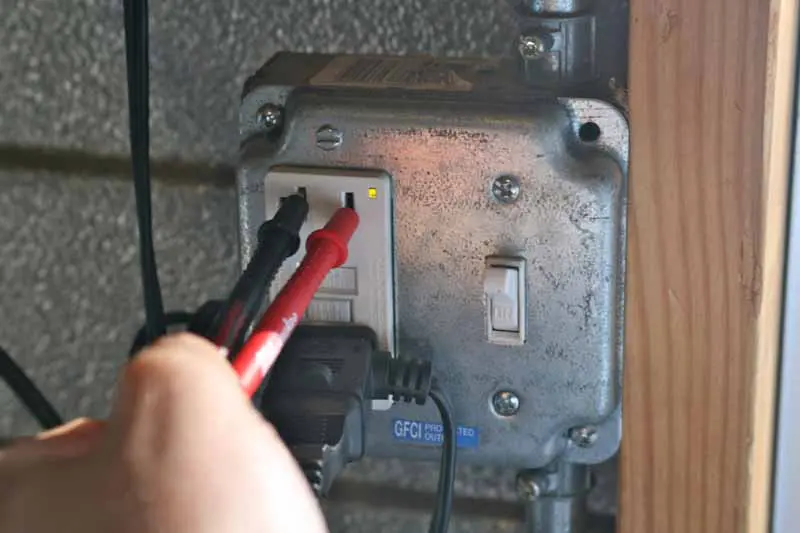When shopping for electrical test & measurement tools you will often come across category designations from I – IV. These can be confusing or lead you to think that you need to look for a certain category, or that one is better than another. In terms of application, that might be correct. Overall, these designate particular uses and ratings for electrical test & measurement tools, and so we decided to put together this article to clear up any confusion and put it all into layman’s terms.
Why Tools Are Certified with Electrical Measurement Categories
Before looking into the various categories it’s important to understand exactly why tools are certified in particular ways. First off, when dealing with electricity, you MUST understand that the tool is either designed for a particular application or not. Many people don’t stop and think about what would happen if the test probes, for example, don’t have enough insulation and too much voltage is applied to them, causing an arc. Or if too much current passes through the meter, causing it to more or less explode.
These aren’t just imaginations, each one of these events has happened time and time again to electricians and amateurs alike who decided to use improper equipment to test and measure current and voltage. With that said, let’s take a closer look at the four primary measurement categories for electrical tools.

Measurement categories can be broken down into four basic designations:
CAT I Measurement Category
This electrical measurement category is for measurements of voltages from specially protected secondary circuits. Such voltage measurements include signal levels, special equipment, limited-energy parts of equipment, circuits powered by regulated low-voltage sources, and electronics. These categories of use present very little chance for danger or overloading on any significant level.
CAT II Measurement Category
This is sufficient for a receptacle outlet circuit or plug-in loads also referred to as “local-level electrical distribution”. This would also include measurements performed on household appliances, portable tools, and similar modules.
CAT III Measurement Category
Distribution wiring is qualified for this group, including “mains” bus, feeders, and branch circuits. Also, permanently installed or “hard-wired” loads and distribution boards. Other examples are higher voltage wiring, including power cables, bus bars, junction boxes, switches, and stationary motors with permanent connections to fixed installations.
CAT IV Measurement Category
This is “Origin of installation” or utility level applications such as any outside cable run. This category refers to measurements on primary overcurrent protection devices and on ripple control units.
Comparing Electrical Measurement Categories
In a nutshell, the higher the electrical measurement category, the more risk there is of what’s known as an “arc blast” – a situation where high voltage can overload a circuit and cause electrical (and physical) damage. Arc blast can ruin your whole day… or life. The higher the short circuit fault current available, the higher the category. While a CAT II rating can be higher voltage than a CAT III rating (say CAT II 1000V vs. CAT III 600V) – the higher CAT rating is almost always the safer rating.

What Can Happen, and What’s the Protection?
- Problem: Arc from transients (lightning, load switching)
Protection: Independent certification to meet CAT III-1000 V or CAT IV 600 V - Problem: Voltage contact while in continuity or resistance
Protection: Overload protection in OHMs up to the meter’s volt rating - Problem: Measuring voltage with test leads in current jacks (short circuit!)
Protection: High energy fuses rated to the meter’s voltage rating; Use meters/testers without current jacks - Problem: Shock from accidental contact with live components
Protection: Test Leads double insulated, recessed/shrouded; finger guards; CAT III – 1000V; Replace when damaged - Problem: Using meter or tester above rated voltage
Protection: God’s providence
Electrical Measurement Categories Compared
| Rated Voltage | CAT IV | CAT III | CAT II | CAT III | CAT II | CAT I |
|---|---|---|---|---|---|---|
| 150V | 4000V | 2500V | 1500V | 2500V | 1500V | 800V |
| 300V | 6000V | 4000V | 2500V | 4000V | 2500V | 1500V |
| 600V | 8000V | 6000V | 4000V | 6000V | 4000V | 2500V |
| 1,000V | 12kV | 8000V | 6000V | 8000V | 6000V | 4000V |
| Ω | 2-ohms | 2-ohms | 12-ohms | 2-ohms | 12-ohms | 30-ohms |
Reading this electrical measurement categories chart is pretty simple. If a specification informs the user that a tool is rated for 300V CAT II and 600V CAT I then the module can withstand up to 2500V of impulse voltage. This type of specification would additionally inform the user that the device must not be connected to MAINs CAT II circuits when operated above the specified 300V. And of course, the tool or device rated in this manner should not be used with Category III or IV circuits.
Certifications and Standards
IEC sets standards but it doesn’t test or enforce industry or product-level compliance. As a result, a manufacturer can claim to “design to” a standard but have nothing in place that substantiates their claims.
This is particularly of concern with new products being sourced out of China and being sold under generic names (with no major manufacturer branding and oversight). To be UL-Listed, CSA or TUV-Certified, a manufacturer has to pay and submit products to a listing agency to actually test (often destructively) the product’s compliance with the standard.
Big tip: in most cases, just look for the listing agency’s emblem on the meter.
Your bottom line takeaway here is this: Match the tool with the application and pay attention to certifications and specifications. The results can be devastating if you don’t.



